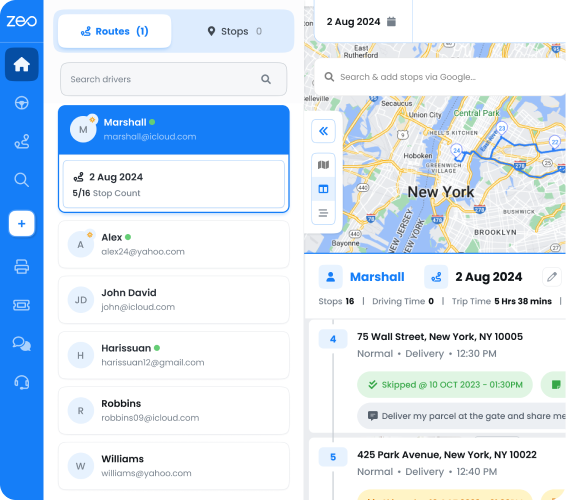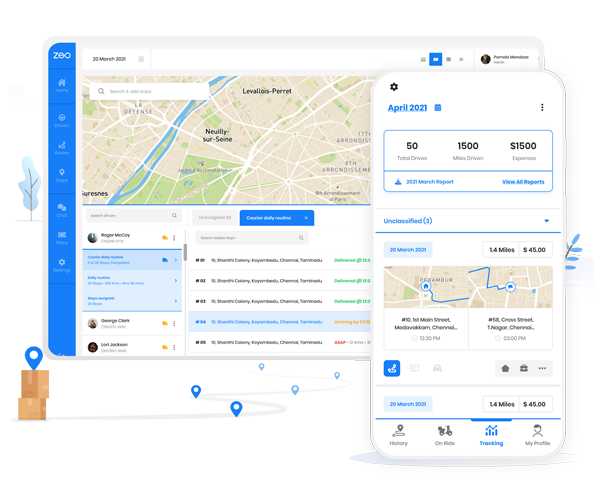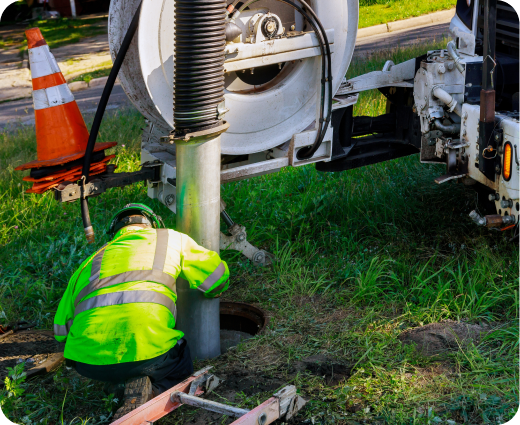Updated on: September 28, 2025
Did you know the U.S. septic tank systems market hit $1.02 billion in 2023? And it’s expected to climb to $1.39 billion by 2032.
But it’s not just the systems. The service side, including cleaning, pumping, and inspections, is growing even faster. The Verified Market Report highlights growth in its services segment, which is set to cross $2.1 billion by 2033, up from $1.3 billion in 2024.
So yes, demand is real. But with that comes complexity. New entrants may need more than just a pump truck and a license. What can help you more is smarter logistics, optimized routes, and systems that scale with their daily volume.
That’s where routing software, automation, and process visibility start to matter.
More on it below.
How to Start a Septic Tank Business in 2025
When you’re starting a business in 2025, you’ll have a few steps to follow as a process of setting it up. The demand is on the rise across both residential and commercial segments, and so, there’s room for well-run operators to grow fast.
And, here’s what you can do.
A. Start With Research: Understand the Market
Before pricing anything or filing paperwork, take a hard look at the ground you’re planning to cover. Septic services tend to be hyperlocal. That means knowing your area inside and out is your most significant edge.
Here’s how to start strong:
- Map your service zone
Are you covering mostly rural lots with bigger tanks and wider spacing? Or suburban homes with tighter scheduling needs? Residential work is more frequent, but commercial contracts can be more stable and lucrative. - Audit your competition
Check Google Reviews, Yelp, Facebook, or any other review sites where people complain. Is someone booked out for weeks? Do they lack emergency response? That’s your entry point. - Track demand trends
New housing developments, construction permits, and even Airbnb density: all signal a growing need for septic installations and maintenance. (Tip: Zillow heatmaps and real estate reports are gold here.) - Check state and county rules
Licensing, wastewater disposal laws, and permit structures vary wildly. Some states require certified operators, while others focus more on disposal tracking. - Use public data where it helps
The EPA’s SepticSmart program (USA) or state health department portals often list grant-funded areas, underserved communities, or outreach zones.
B. Handle Compliance: Licenses, Certifications, and Permits
Next, you’ll need to finalize the paperwork and initiate the process of becoming compliant before rolling out your first service call. Septic services fall under environmental regulation, so state and federal compliance would help set the proper foundation.
You’ll take the following actions here:
- Wastewater Handling License
Most states require a dedicated license for pumping, transporting, or disposing of septic waste. Each state has its own board, with some requiring a simple exam, others a multi-day training. - CDL (Commercial Driver’s License)
If you’re operating a vacuum truck over 26,000 lbs (which most do), a CDL is non-negotiable. Depending on your state, you may also need a tanker or hazardous materials (HazMat) endorsement. - OSHA Safety & Training
It’s essential to protect your crew. For this purpose, there is the OSHA (Occupational Safety and Health Administration) in the USA and the Health and Safety Executive (HSE) in the UK. These institutions require safety training, particularly in areas such as confined spaces, biohazards, or hazardous material exposure.
C. Plan the Operations
Before you budget for trucks or tools, take a beat to figure out how the work is going to flow. Your daily operations will either hold this business together or may quietly drag it down.
For this, you’ll need to manage dispatch, follow-ups, last-minute add-ons, and juggle repeat customers.
When handling more than just a handful of calls a day, things get crowded quickly. Paper logs and Google Sheets are limited in their functionality.

increase fuel savings
Save 2 Hours on Deliveries, Everyday!
Optimize routes with our algorithm, reducing travel time and costs efficiently.
Get Started for Free
So think through these questions early:
- How will you schedule jobs across zip codes without wasting time on the road?
- What happens when an emergency call comes in mid-route?
- Can your team check off jobs, update progress, and move to the next site without needing to call in?
- Who handles follow-ups, service history, or customer preferences?
When mapped out well, operations give you leverage. You know exactly how much work fits into a day, where to slot in high-priority jobs, and how to respond to curveballs without delays.
This is where routing software built for field services, such as Zeo makes a tangible difference.
With Zeo, you get to sync service windows, track crew movement, and auto-prioritize jobs based on urgency or location.
Zeo Route Planner for Septic Tank Businesses
Zeo’s advanced route optimization for septic business will plan your tag emergency work, assign based on driver location, and view job histories at a glance.
D. Buy Equipment and Systems
Once you’ve mapped out how your operations will run, it becomes easier to decide what tools actually serve your model. A residential-only operator won’t need the same gear as someone servicing construction or commercial clients.
You’d also make sure that the equipment you buy is aligned with your service area, volume expectations, and crew capacity.
Some of the essential considerations are:
- Vacuum Pump Truck
When buying a vacuum pump truck, you might want to consider the tank size, suction power, and local terrain. Typically, the smaller rigs are better suited for suburban routes with tight driveways. But the rural or commercial setups may need higher-capacity trucks with stronger suspension. - Jetting and Inspection Accessories
For the line cleaning, you can benefit from the high-pressure jetters. And there can be camera systems as well, which help in the inspections that many customers (and some municipalities) now expect. Also, it’s a nice way to create add-on revenue streams if positioned right. - Safety + Compliance Tools
It’s the basics. The PPE, confined space kits, cones, signage, and spill control equipment help build trust. The last thing you want is a delay (or fine) due to missing gear.
Wrapping Up
Finally, you’re all set to run the septic tank business. It’s when you’ll think of the profits and benefits. For instance, you’d choose between flat-rate and hourly pricing, provide video inspection services, offer emergency visits, and much more.
The success of your septic tank business depends on how well you manage both the tasks that precede and follow the job. It includes routing, live updates, crew visibility, and billing.
Your septic tank business can benefit from using Zeo Route Planner, as it streamlines daily planning, automates scheduling, and keeps drivers moving without delays. As you start the septic tank business, take a key step to avoid wasting time on manual planning and instead, adopt Zeo Route Planner to keep your entire workflow in one place.

Are you a fleet owner?
Want to manage your drivers and deliveries easily?
Grow your business effortlessly with Zeo Routes Planner – optimize routes and manage multiple drivers with ease.

increase fuel savings
Hassle Free Deliveries & Pickups!
Optimize routes with our algorithm, reducing travel time and costs efficiently.
Get Started for Free





















